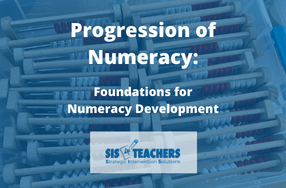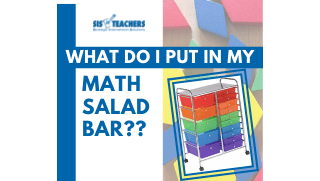For a long time, people have asked me to tell my story of how I came from the classroom to where I am today.
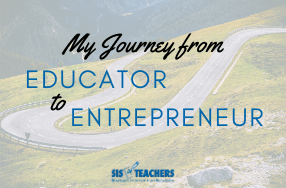 As I’m so focused on the future and the work we’re doing in schools today, I don’t usually take the time to stop and reflect on how I got here. Honestly, it’s really hard to look back on the series of events that led me here and pick out the highlights. However, recently, I was asked to do just that. A dear friend of mine, Danny Brassell, recommended me to Suzanne Klein, an educator turned entrepreneur who specializes in helping educators who are ready to leave the classroom to pursue more freedom in their lives. She was hosting a virtual summit and wanted to interview me!
As I’m so focused on the future and the work we’re doing in schools today, I don’t usually take the time to stop and reflect on how I got here. Honestly, it’s really hard to look back on the series of events that led me here and pick out the highlights. However, recently, I was asked to do just that. A dear friend of mine, Danny Brassell, recommended me to Suzanne Klein, an educator turned entrepreneur who specializes in helping educators who are ready to leave the classroom to pursue more freedom in their lives. She was hosting a virtual summit and wanted to interview me!
The work Suzanne is doing is very profound. As I work in different schools, I see a lot of educators in our country who are overworked, underpaid and incredibly underappreciated. Many teachers feel stuck in their classrooms, lacking both passion and purpose. I hope that, by participating in Suzanne’s summit and telling my story here, I can help even one of those educators start to think about how there might be more out there for them, that they can experience fulfillment and purpose again.
The word entrepreneur sounds a little odd when applied to myself. It sounds like it should describe someone who has done something out of the ordinary, who has struck out on their own, created something or innovated a new product that will change the world, and is now actively marketing and selling that thing. Of course, if I look at the direction of my career, moving from elementary classroom teacher to consultant, I am absolutely an entrepreneur.
My entire journey to this point has been a series of doors opening and closing. I’m a firm believer that, if you put good in, you get good back. There are so many toxic and negative people who reap that same negativity back into their lives, but I think, by being positive, having direction or a vision for your life, you can really make anything happen.
A Strategic Beginning
I went to Michigan State University (because my sister went there) where I got my degree in both special education and general education. At Michigan State, you were required to do a whole year of internship and I did mine in both elementary and special education. Just before I finished the internship, I put out resume after resume. The lines at job fairs were forever long, but because I had a dual degree of elementary and special education, I got to go straight to the front! I remember getting over 32 calls for interviews, even after I was eventually hired by Troy Public Schools in Michigan to go straight into a teaching position as a self-contained special education teacher. I literally finished my internship, went on Spring Break, and came back that next Monday to my first teaching job! Troy is an affluent area, but I was in the Title 1 building with a very transient, high ESL population.

My first classroom was a resource room of sorts. Even though kids didn’t come straight to me and hang up their coats, I was still in a self-contained room. I had four filing cabinets filled with the old purple-lined dittos, some of which had rusted paper clips holding the stacks together. There was an In and Out folder for every kid, and there were small Dick and Jane books inside everyone’s folder. So the teacher would read the very controlled phonics book, and then students would sit and do their in/out dittos.
During the spring break before I started, my family helped me fill an entire dumpster with stuff that I cleaned out from that room. At Michigan State, everything we learned was on a more engaging levels, so I didn’t see the need for those faded, purple-lined dittos, even though the filing cabinets had one on every single subject! I was able to reduce it down from four to one filing cabinet and then asked for $1000 to be able to transform the room into what I thought special education students needed.
My start in education was really very entrepreneurial in nature. I didn’t have to follow the general education curriculum because I was dealing with students in my classroom that were on the autism spectrum, emotionally impaired, cognitively impaired, all the way to learning disabled. With such a range of needs, I really had to design or create things for the kids in my classroom to meet their needs.

My students did have one thing in common, however: almost every child on my case-load couldn’t read. I quickly realized that, though I had learned a lot from Michigan State, I never really learned how to teach kids to read, so I went to get my Masters’ degree and Reading Specialist Certificate from Oakland University. I wanted to feel confident that, even though I was new to the profession, I could help kids learn to read.
That was really a pivotal moment to what I’m doing today. Though I probably didn’t realize it at the time, this was perhaps the beginning of “Strategic Intervention Solutions.” From day one, I felt like everything I was doing with my students needed to be very strategic. Before that, I didn’t really have the full understanding of what to do when kids weren’t responding to traditional methods. I knew I needed to do things differently, and I started to take the approach of If what we’re doing isn’t working, how are we going to change it? And I didn’t want to change it slowly, I wanted to make corrections quickly! It’s similar to being in the medical field – you have to analyze what’s going on in order to figure out how to repair it.
A Different Approach to Special Education
After two years in that position, I was going to get married and so moved closer to my hometown. I applied to three different school districts that I really wanted to work in and was interviewed by all three. They were all in more affluent areas where I felt like I could really be supported in the innovative things I wanted to do for students and what I believed in in the classroom. Though I had offers from all three districts, I was excited to accept a position in Northville Public Schools, which had a reputation as a very innovative district. I had two years of experience and felt a bit more confident, but I was still very much a new teacher. I was excited to be at an elementary school, again with a large ESL population in the Title 1 building as a resource room teacher and a teacher consultant.
As I started this position, I was a little confused as to why they were hiring me. I didn’t have very many kids on my caseload, and we had a full-time paraprofessional as well as an additional resource room teacher. But my school had partnered with Dr. Ed Gickling and Dr. Todd Gravois at the University of Maryland in something called Instructional Consultation Teams (or ICT )and we were trained on how to do consulting as a different way of approaching special education.
 Traditionally, special education was driven by child study teams. If a general education teacher believed a child was struggling or wanted to get some intervention, they would sign up to sit in front of the child study team (made up of a psychologist, the principal, the special education teacher, the consultant, the counselor, etc.) and explain their case. In most schools, it took about three weeks to get an audience. Then, the panel would ask things like, “Have you tried moving his seat?” and then send you back to try these “new” things, collect more data for the interventions they suggested, and then you’d have to sign up for another meeting in another three weeks. It could be an eight month process!
Traditionally, special education was driven by child study teams. If a general education teacher believed a child was struggling or wanted to get some intervention, they would sign up to sit in front of the child study team (made up of a psychologist, the principal, the special education teacher, the consultant, the counselor, etc.) and explain their case. In most schools, it took about three weeks to get an audience. Then, the panel would ask things like, “Have you tried moving his seat?” and then send you back to try these “new” things, collect more data for the interventions they suggested, and then you’d have to sign up for another meeting in another three weeks. It could be an eight month process!
It felt like a battle between special education and general education. Most of the time, the general ed teacher would have tried everything in their bag of tricks before taking it before the child study team, but they still had to jump through the hoops to kids tested to get the help they needed. Back then, a special education teacher wasn’t allowed to service any of the general ed kids because our certification and monies were only to be used for kids with qualifications. I remember being on that child study team at Troy and wondering why we didn’t do the same specialized things we were doing for our special ed kids for the at-risk kids in general ed classrooms. After all, isn’t differentiation in instruction just good teaching?
The Instructional Support Team was tasked with supplying instructional supports to prevent early learning failure. In a typical school district, about 20% of the student population is made up of students with learning disabilities. It’s very very expensive to be able to help them. By preventing early learning failure, we saved the district about a million dollars a year. We created different types of interventions to really target kids early, because, once third grade hits, that early intervention window comes to a drastic close and it’s very hard to get over a year’s growth in a year’s time.
During my time there, I got to be a part of some really amazing work thanks to Bob Sornson, then my Special Education Director and later founder of the Early Learning Foundation. He held great collegial meetings where I was able to collaborate with other special ed teachers from the other schools in the district to help generate ideas. I worked with some of the most amazing educators in my career at Northville. I could still say that today because I’ve met hundreds of other people, but I’ve never worked with such talented teachers that have such a different perspective about what education should look like.
I started to understand how to look at the whole child – fine motor, gross motor, visual motor integration, looking at kids that couldn’t sit still…and that was really where my interest piqued. It’s not like a miracle happens in special ed. It’s not like I had different strategies or was a better teacher than the general ed teacher, but I was able to specialize the instruction to really intervene strategically for each student. I think that every teacher should have to have a dual degree in general and special ed because it gives you a very different perspective about how kids learn.
 Our school was a model school for preventing early learning failure, and I remember using an overhead projector to present to teams from other schools that would come to see what we were doing. However, I always felt like the audience didn’t really understand when we were talking about things like visual memory and motor skills. So, I decided to break it down like I did for my special education students. They came all this way, and I wanted to help them feel it, live it, and understand how they could implement the same kinds of things in their own schools. I felt like I had a calling. When I was in front of an audience of teachers or adults, I felt like I could help them understand by breaking down the concepts to be more digestible so they could build their skills in their school, and that really helped build my skills for my current life as a consultant.
Our school was a model school for preventing early learning failure, and I remember using an overhead projector to present to teams from other schools that would come to see what we were doing. However, I always felt like the audience didn’t really understand when we were talking about things like visual memory and motor skills. So, I decided to break it down like I did for my special education students. They came all this way, and I wanted to help them feel it, live it, and understand how they could implement the same kinds of things in their own schools. I felt like I had a calling. When I was in front of an audience of teachers or adults, I felt like I could help them understand by breaking down the concepts to be more digestible so they could build their skills in their school, and that really helped build my skills for my current life as a consultant.
Though I’m not doing anything the same kind of work now, it was definitely a stepping stone in my journey from educator to entrepreneur.
Branching Out
After all of my years teaching at Northville, I had the opportunity to go part-time. I had had my daughter, Emma, and I was about to have our second child, Connor. Around that time, my special ed director and mentor, Bob Sornson, told me we ought to go on the road together. I remember thinking that was a great idea…when I got older and had more experience. I was only in my 30s and even though I had several years of experience, I didn’t feel as qualified as some of the other educators I knew that were retiring into a second career as consultants. I felt like you couldn’t really become an entrepreneur without a certain a vast body of experience.
 Fortunately, I didn’t listen to that feeling. With the uniqueness of my background and experience I felt like branching out was something I could actually do. I also remember having a vision (strange, I know…) while I was running one day. I love running, and even ran a marathon once before I had kids! Running has always been my outlet, a time when I can think and process. One day on the treadmill, I had a vision of this experience that I had in Northville and I felt like there was something more for me to do, some kind of future in something like that, but I didn’t know what at the time.
Fortunately, I didn’t listen to that feeling. With the uniqueness of my background and experience I felt like branching out was something I could actually do. I also remember having a vision (strange, I know…) while I was running one day. I love running, and even ran a marathon once before I had kids! Running has always been my outlet, a time when I can think and process. One day on the treadmill, I had a vision of this experience that I had in Northville and I felt like there was something more for me to do, some kind of future in something like that, but I didn’t know what at the time.
Being part time gave me the freedom to explore that purpose and pursue my consulting career to see if that was really what I wanted to do, while at the same time being able to spend more time with my kids. I figured that, if it all went up in smoke, I could always go back to the classroom!
I split my time in several different directions. I had gotten some jobs with the ISD helping in some high priority schools, and had also gotten the opportunity through the Early Learning Foundation to join a summer partnership with Staff Development for Educators (SDE) where I would be a cohort leader helping schools to really understand the prevention of early learning failure. On the one hand, when I was working with SDE, I was in schools it was really rewarding. They were excited to have me there and I felt like I was really able to have an impact. On the other hand, when I was working with the ISD, I was brought in by the state of Michigan to high priority schools because they were essentially failing. My welcome was not as warm there, in fact, a gentleman literally slammed his door in my face on one visit. I quickly realized that I didn’t want to be a consultant in a place where I wasn’t wanted!
At first, it was really discouraging, to be honest with you. I was seriously considering going to go back into the classroom. But then, I was given an opportunity through SDE to try out to be one of their traveling presenters. I will NEVER forget being asked to go to Chicago for my first presentation. Normally you pay your own way, and you don’t get paid to present for your trial. Then, there’s someone in the room from the company acting as a participant who is evaluating your presentation. But SDE was really interested in the project I was working on and so they actually paid my way to go and present four sessions for them! It was surreal to be sitting on a plane thinking about how someone else had paid for me to be there!
 A bright spot in this uncertain time was the publication of my first book! Finger Funatics, a fine motor development program, was the foundation for the early learning work that I did and was created based on the ideas that we used in our interventions. We had gross motor screeners that we used, but nothing for fine motor skills. Kids were coming to us holding scissors like they were hedgers and every year, it got worse and worse! So, all of the students in our classrooms were to be screened through Finger Funatics in order to determine potential areas of deficit and help them develop those so they didn’t become an issue later on. Through my connections with the Early Learning Foundation, I pitched the idea of Finger Funatics to some of the other national presenters I’d met and they encouraged me to go ahead with publication!
A bright spot in this uncertain time was the publication of my first book! Finger Funatics, a fine motor development program, was the foundation for the early learning work that I did and was created based on the ideas that we used in our interventions. We had gross motor screeners that we used, but nothing for fine motor skills. Kids were coming to us holding scissors like they were hedgers and every year, it got worse and worse! So, all of the students in our classrooms were to be screened through Finger Funatics in order to determine potential areas of deficit and help them develop those so they didn’t become an issue later on. Through my connections with the Early Learning Foundation, I pitched the idea of Finger Funatics to some of the other national presenters I’d met and they encouraged me to go ahead with publication!
 The Finger Funatics Parent Companion was developed because we wanted to do something that would help the parents understand the fine motor development process so they could support it at home. Finger Funatics Parent Companion contained the same activities, but we stripped out the educational jargon and wrote it on a much simpler reading level so it could be universally understood.
The Finger Funatics Parent Companion was developed because we wanted to do something that would help the parents understand the fine motor development process so they could support it at home. Finger Funatics Parent Companion contained the same activities, but we stripped out the educational jargon and wrote it on a much simpler reading level so it could be universally understood.
I got the book into every single early childhood program in the schools in Wayne County, where I lived at the time. Districts used it for RtI, once that came about, to prevent early learning failure based on fine motor development. Even 10 years later, Finger Funatics is still one of our best sellers on our website (we did a second printing and even added a digital download option!) because this topic is so much more relevant today than it was then!
My teaching partner and I had decided to do the job share until our kids were in Kindergarten, but there were so many cuts in education at that time. At the end of the four years of part-time being part time, I had to make a decision. I had a safety net – I was making a good salary and had time with my kids, but I also had time to pursue consulting. But something in me just felt like it was time to take that leap of faith and take a leave of absence.
No More Squawking
As an educator in a classroom, you can make a difference with the kids that you work with and in the building or the district that you’re working in. But when I realized that I could also impact teachers across the country as a presenter, that was a turning point for me. It was at that point that I could start rewriting my future.
That doesn’t mean it was an easy decision. I struggled with feeling inadequate – I wasn’t better than anyone else, so why should I go out on my own? What would my colleagues think? Would they feel like I thought I was better than them? There is definitely a lot of negativity and toxicity among teachers, especially at the elementary level. But in the end, I had a different vision of what I wanted for the rest of my career.

My principal at the time, Pat Messing, knew a lot about what I was doing and what my goals were, and she actually encouraged me to take that leap. She called me into her office and gave me the analogy of birds on a wire. “They’re all squawking and making noise,” she said, “but you are going to fly away and be fulfilled. Eventually you’ll come back to visit and you’ll find the same birds on the same wire, still squawking away.” It was sort of like giving me permission to spread my wings and see what happened.
I made the decision to take a leave of absence. From there, it really feels like a blur! Originally, I was looking at working with preventing early learning failure, as I’d done up to that point, but I started morphing into looking at numeracy development. People always wonder why, as a reading specialist, I didn’t go into reading. I looked at reading instruction and saw how it had changed over the past 15 years to become really individualized and much more effective. But I realized that teaching in the area of math had not enjoyed the same advancements. Why were we still “page-turning” through the math textbook when reading was catering to each individual child’s abilities?
 I really didn’t know how it would all turn out, but I do vividly remember landing my first big contract. I was taking Connor, who was three at the time, to swim lessons. Just a few days before, a big opportunity had fallen through and I was back to being scared and unsure. A curriculum director I knew had asked me to put in a bid on a different project that called for math interventions in a school that had a large population of at-risk and special education students. We were at the snack shack when I got the call, “Is this a good time?” she asked. It wasn’t, but I frantically whispered to Connor to pick anything he wanted, handed the lady my credit card, and dug out something to write with and on from the diaper bag. “Of course!” I lied. The bid that I wrote that day, which was on a coffee sleeve because it was the only thing I could find, was one of the first bids I actually won!
I really didn’t know how it would all turn out, but I do vividly remember landing my first big contract. I was taking Connor, who was three at the time, to swim lessons. Just a few days before, a big opportunity had fallen through and I was back to being scared and unsure. A curriculum director I knew had asked me to put in a bid on a different project that called for math interventions in a school that had a large population of at-risk and special education students. We were at the snack shack when I got the call, “Is this a good time?” she asked. It wasn’t, but I frantically whispered to Connor to pick anything he wanted, handed the lady my credit card, and dug out something to write with and on from the diaper bag. “Of course!” I lied. The bid that I wrote that day, which was on a coffee sleeve because it was the only thing I could find, was one of the first bids I actually won!
It was a pretty intense project that required 60 days on campus, so I had to hire another consultant to work with me. I created intervention kits to go with this project and it was the first stepping stone to where I am today. Everytime I went out to bid something that didn’t go the way I had hoped, I would think What am I doing? Can I really do this?? And it was always three days later that something bigger and better would come through. I never really advertised, but the work that we were doing was making such a difference in the schools we were working with that word got around.
As the opportunities came, the one that fell through before the coffee sleeve bid actually ended up coming through and I had to hire another consultant to help me. And so the Strategic Intervention Solutions group was born! When I first started the company, I didn’t really know what to call it, so it was just Shannon Samulski, LLC.
Expanding into Products
As I grew as a consultant, I also began developing more products that would support my methods of intervention. Many of the products came about because I saw a need in the classrooms and came up with a strategic way to solve it.
My Math Strategy Games download was one of my early publications that brought the Eight Mathematical Practices into play. I knew how to use Pages, and I knew the kids I was working with needed to be challenged more, so I went in and created game boards for some of the games we typically played in the classroom.
Then I came up with our screeners – the Understanding Number Quantities and the Combinations Screener – because I wanted to use them in my training as a part of analyzing kids in the area of numeracy. I always thought of kids as onions and that we peeled back the layers as we worked to find the root of the problem.
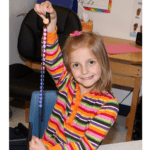 The Counting Buddy was a different story, since it was a physical product. I had seen and used lots of different manipulatives in my time, but I wanted to be able to create a character that would be fun for kids, something they could use instead of dragging out counters that would end up all over the classroom. We were flying somewhere and I drew out the idea for the Counting Buddy on a barf bag that I took to my cousin, who made bracelets. She put together a bunch of different prototypes for me, and then I had the task of figuring out how to produce them.
The Counting Buddy was a different story, since it was a physical product. I had seen and used lots of different manipulatives in my time, but I wanted to be able to create a character that would be fun for kids, something they could use instead of dragging out counters that would end up all over the classroom. We were flying somewhere and I drew out the idea for the Counting Buddy on a barf bag that I took to my cousin, who made bracelets. She put together a bunch of different prototypes for me, and then I had the task of figuring out how to produce them.
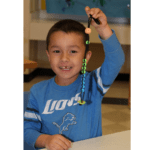 We got the different parts from various places all over the world – the feet came from a factory in China, the heads have come from a number of different places, the laces came from a place in Ohio that sold us athletic lacing by the gross, and the hooks came from a place in California. I knew there was no way I was going to sit and put them all together, and maybe it would have been easier to find one place to mass produce them, but I found my solution! I paid high school kids to assemble the Counting Buddies! Our neighbors joked that we looked like drug lords because these high school kids would bring these big bags to our house (full of completed Counting Buddies, of course) and then I’d give them cash. Eventually we transitioned to an “in-house factory” and one of my family members who is retired assembles the Counting Buddies with her husband.
We got the different parts from various places all over the world – the feet came from a factory in China, the heads have come from a number of different places, the laces came from a place in Ohio that sold us athletic lacing by the gross, and the hooks came from a place in California. I knew there was no way I was going to sit and put them all together, and maybe it would have been easier to find one place to mass produce them, but I found my solution! I paid high school kids to assemble the Counting Buddies! Our neighbors joked that we looked like drug lords because these high school kids would bring these big bags to our house (full of completed Counting Buddies, of course) and then I’d give them cash. Eventually we transitioned to an “in-house factory” and one of my family members who is retired assembles the Counting Buddies with her husband.
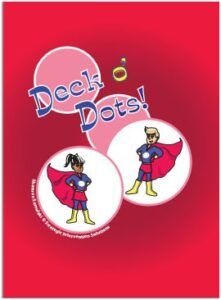
Early Deck o’ Dots

Deck o’ Dots today!
Deck o’ Dots came about around the same time that the Counting Buddy did. I saw a need, something really important that needed to be in classrooms, and then had to figure out how to make that happen. Printing, cutting, and assembling these decks by hands was just not a good use of time, and we needed to figure out something faster. My aunt, a graphic designer, helped me with the artwork and with navigating the printing world, and we produce 10,000 decks of cards that are now used in thousands of schools and homes around the world. To read more about the beginning of Deck o’ Dots, check out this blog post.
Normally, I’m not a big risk taker, but looking back, if I’d never taken that leap of faith, if I’d never listened to my internal voice over the noise of the other birds on the wire, I would still be sitting on that wire, content with my lot in life. When I think of the difference I’ve been able to make in so many different schools for so many thousands of students, I’m so glad that I flew towards my vision. But, the best is yet to come!


